CTB Hamburg: HHLA Container Terminal Burchardkai
The Burchardkai (CTB) is not only HHLA's largest container terminal, but also a central hub for global trade. Almost a third of all containers passing through the Port of Hamburg are handled here – a decisive contribution to the efficiency of the port and global supply chains.
Since the arrival of the first container ship in 1968, the CTB has shaped the development of the Port of Hamburg as a pioneer in container handling and is a key hub in international trade. Today, we are driving forward one of the largest brownfield projects in the industry: while remaining fully operational, we are developing the terminal into one of the most sustainable and efficient container hubs in Northern Europe.
Central Hub of the Port of Hamburg
As the central hub in the Port of Hamburg, the HHLA Container Terminal Burchardkai covers an area of 1.4 square kilometres on the former Elbe island of Waltershof. This terminal area is used particularly efficiently, for example through an innovative storage crane system. The handling of millions of containers per year contributes significantly to the port's performance.
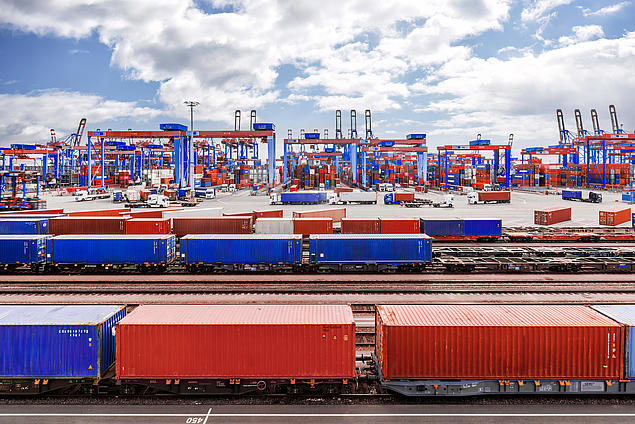
The rail connection between the Burchardkai Terminal and the Hamburg railway port is an important part of its infrastructure. The Port of Hamburg is not only one of the largest seaports in the world, but also the largest railway port in Europe. More than 50% of all hinterland containers arrive at or depart from the port by rail. With ten tracks, each 740 metres long, the Burchardkai Terminal is ideally designed for the smooth handling of block trains, thus contributing to the climate-friendly and efficient interconnection of European economic regions.
Modernisation of the CTB: The Industry's Largest Brownfield Project
We are currently implementing one of the most significant brownfield projects in the industry at the CTB. While operations continue, we are transforming the terminal into a future-proof, high-performance container hub within our European logistics network with the help of innovative automation technology. This ambitious redesign will enable us to increase the terminal's capacity and make processes more sustainable.
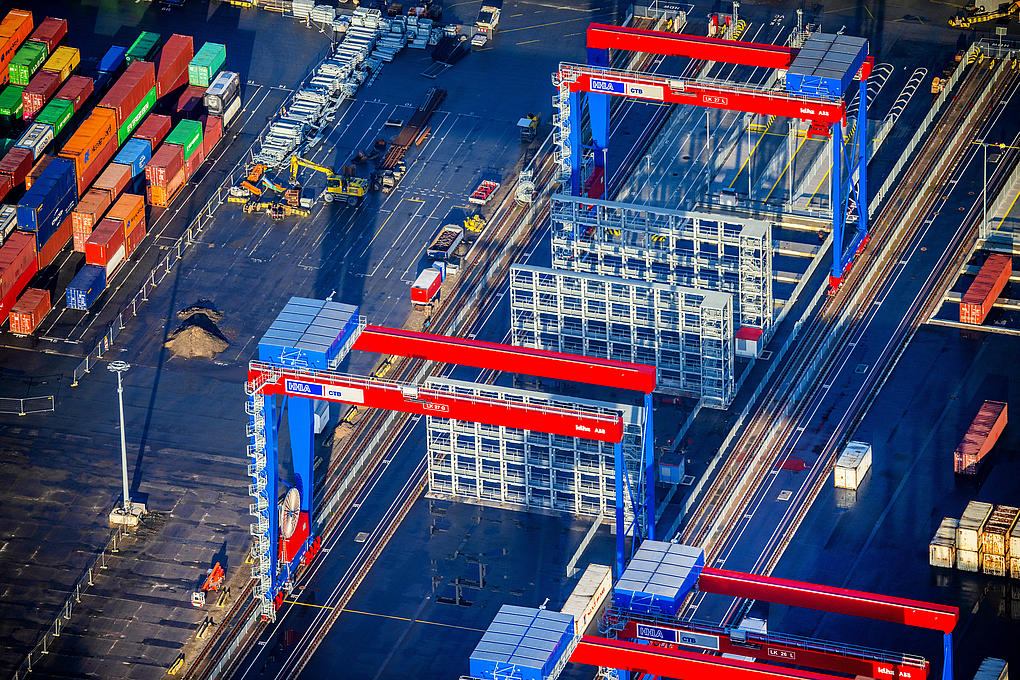
In a brownfield project, existing terminal areas are extensively rebuilt during ongoing operations and additional processes are automated. In contrast, a greenfield project is built from scratch on an undeveloped site. One example of this is our HHLA CTA Hamburg in Altenwerder.
With this ambitious restructuring, we are setting a clear goal: to further develop HHLA Container Terminal Burchardkai into one of the most modern container terminals in Northern Europe. A key aspect of the comprehensive transformation is the continued automation of many processes. This increases efficiency and simplifies workflows. At the same time, it reduces resource consumption and CO2 emissions – a decisive step forward for sustainable terminal operations.
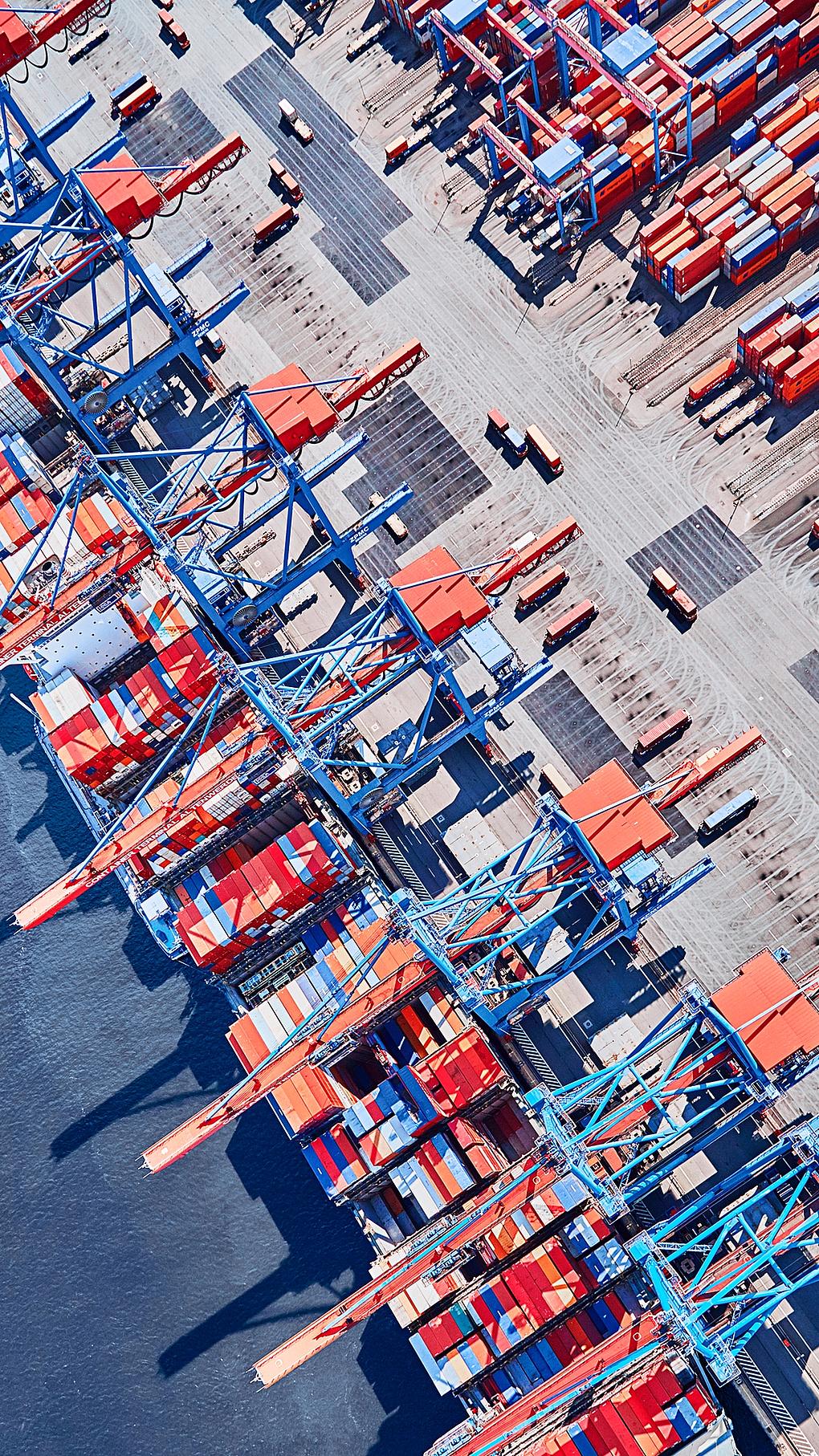
Automation in Logistics
With state-of-the-art technology, we optimise container handling, increase efficiency, and enhance safety at our terminals.
Read moreAutomated Container Storage
We are gradually modernising our VC yard (container storage facility operated by van carriers) at CTB Hamburg and converting it to automated storage blocks. Today, 22 electrified storage blocks are already in use, actively contributing to the sustainable development of the terminal. In addition, the use of three gantry cranes per block maximises space efficiency and significantly increases the performance of the system. A particularly innovative feature is the three cranes working on top of each other.
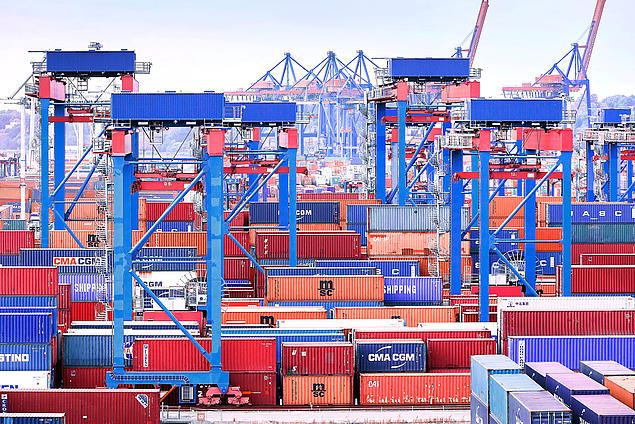
‘Gantry crane “G” is so high that it can pass over the slightly lower cranes “L” on the shore side and “W” on the water side. This allows it to handle the shore side, the block storage area and the water side,’ explains Gesa Witte, Deputy Head of Terminal Development at the CTB.
The first blocks of the fully automated storage crane system were put into operation in 2010. They use green electricity, thereby reducing CO2 and pollutant emissions. The switch to electric storage crane systems (LKS) instead of diesel-powered van carriers saves almost five and a half million litres of diesel and a good 11,000 tonnes of CO2 annually. The space efficiency of the terminal increased by more than 30 per cent with the expansion of the LKS. The storage capacity is now 45,000 TEU.
Autonoumos Container Transport
We are planning further automation on the water side of HHLA CTB. The van carriers (VCs) currently still powered by diesel will be replaced at six of the ten berths by driverless container transporters – automated guided vehicles (AGVs) – powered by batteries. Around 120 such vehicles are planned to replace the diesel-powered van carriers, saving around 12,000 tonnes of CO2 annually. This is another step towards climate neutrality for Burchardkai, a declared goal of our HHLA sustainability strategy.
People and Automation: Investing in the Future
We continuously invest in further training to ensure that our employees are qualified for the new tasks associated with automation in logistics. Despite ongoing technological change, people remain indispensable in terminal operations. For example, remote operators control the warehouse cranes used to transfer containers between the crane and trucks on the land side from a remote control station.
Through continuous training, we ensure that our employees are actively involved in the automation process and can contribute their expertise in this new environment.
HHLA CTB is a Pioneer in Terminal Modernisation
Our HHLA Container Terminal Burchardkai has always been a pioneer in terminal modernisation. Since its inception, CTB has continuously set standards in the industry and demonstrated how future-oriented technologies can be combined with a sustainable approach.
Over the past 20 years, the terminal has repeatedly adapted to the increasing demands of the shipping industry. The container gantry cranes at CTB have been continuously developed to accommodate larger ships. In order to be able to operate larger and heavier container gantry cranes, berths 1 to 6 at Burchardkai were moved forward by around 20 metres: a new area with a new quay wall was created in front of the previous quay facility. Since 2019, the CTB has had three berths where ultra-large container vessels (ULCVs) with a capacity of up to 24,000 TEU can moor.
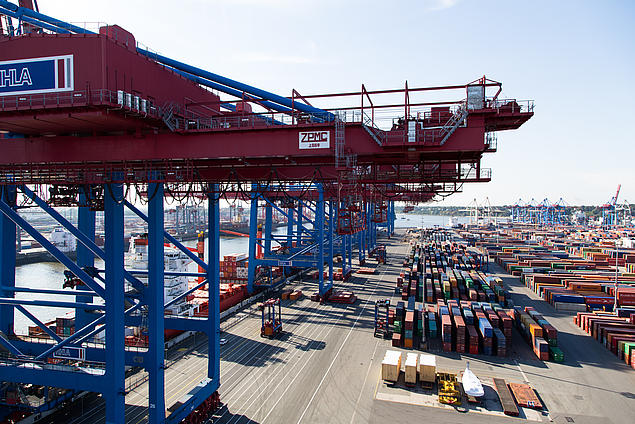
To ensure optimal handling of these huge ships, Burchardkai uses tandem container gantry cranes, which enable two 40-foot or four 20-foot containers to be handled simultaneously in a single movement. There are currently 23 container gantry cranes available at Burchardkai. In future, this number will rise to around 30, including 18 for ULCVs, which are equipped with an almost 80-metre-long jib and can span 26 rows of containers.
With its focus on innovative, environmentally friendly technologies, CTB is making a significant contribution to the transformation of the Port of Hamburg into a sustainable logistics hub.
What is CTB and where is it located?
The Container Terminal Burchardkai (CTB) is HHLA's largest terminal in the Port of Hamburg. It is located on a 1.4 square kilometre site on the former Elbe island of Waltershof.
What is unique about CTB Hamburg?
The CTB has ten berths at the Burchardkai quay, the Parkhafen and the Athabaskakai. There are currently 22 automatic block storage facilities. The terminal's space efficiency has been increased by more than 30 percent thanks to the expansion of the automated storage crane system. The CTB railway station, with its ten railway tracks and four railway cranes, connects the terminal to the European rail network.
How does HHLA Container Terminal Burchardkai work?
CTB Hamburg relies on automation technologies to speed up handling and make processes more reliable. These include automated storage crane systems in the block storage facility, which have been in fully automated operation since 2010 and are supported by artificial intelligence. The block storage facility uses a particularly innovative system with three cranes working one above the other per storage block.
When did the container era begin at Burchardkai?
The arrival of the American Lancer at Burchardkai on 31 May 1968 marks the beginning of the container era in the Port of Hamburg. This was the first fully containerised ship to sail on the Elbe. The first specialised container gantry crane had already gone into operation at berth 3 the previous year.

The Power of Networks
We connect places, companies and people – shaping the logistics of tomorrow. To achieve this, we build on intelligent solutions and the power of our networks.
Learn more